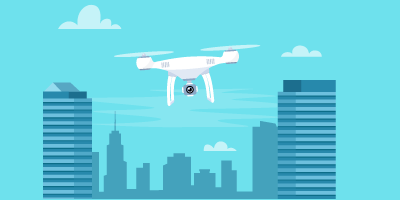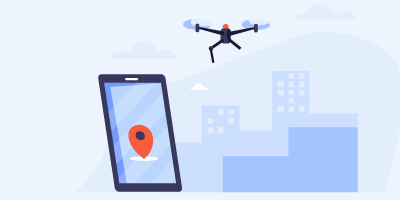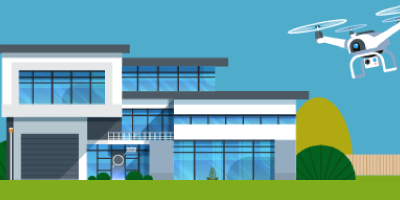The World’s First Drone Rescue Mission
The first official rescue mission with a drone happened yesterday in Australia. The “Little Ripper UAV” dropped an inflatable rescue pod to two swimmers who were caught in a 10-foot swell more than half a mile off of a patrolled beach area. The drone was piloted by a lifeguard supervisor, who was able to rescue the swimmers in just over a minute in comparison to the average of six minutes it normally takes.
The operation took place when lifeguards from the Australian Lifeguard service were preparing for a training session with the new drone fleet. The Little Ripper had only been taken out of the box that morning. This is the first time a drone has been used to rescue swimmers like this and the operation has been hailed as groundbreaking. This was part of the $344,000 investment by the New South Wales government in drone technology.
Lifesaving Drone Deliveries
Water rescue isn’t the only way drones are being used to save lives. In 2016, a drone startup company called Zipline teamed up with the health ministry of Rwanda to deliver more than 5,500 units of blood. The company is making these lifesaving deliveries to 12 regional hospitals. Each of these hospitals serves approximately half a million people. Thanks to these drones, Rwanda is seeing a reduction in maternal deaths due to blood loss and is helping with the treatment of malaria-induced anemia.
Zipline is in the planning stages of working with Tanzania to launch the world’s largest drone delivery network. This will make east Africa a world leader in drone logistics according to CEO and founder Keller Rinaudo. They plan to deliver a range of medical products including blood transfusion supplies, HIV medications, and more to bases supporting more than 1,000 clinics.
Remote Physicians Providing Treatment via Drones
A telemedical drone project called the HiRO is in testing and is expected to be production ready early this year. The telemedicine system was developed in 2013 and is now coming to fruition. HiRO would be used to deliver medical supplies to disaster survivors before first responders can get to the scene. The drone system and telemedical kit uses augmented reality to allow a remote physician to treat multiple victims, an automated medication bin that allows the remote physician to unlock specific compartments, and a holographic health record system display. The drone has various sensors, strong lift capability, and the ability to fly long distances to help locate victims that could be very far away.
This technology is going to change the way medical professionals handle disasters and give them the ability to provide aid in the field to victims who may otherwise go without care due to their location.
Future of Life-Saving Drones
Thanks to the pilots who aided first responders during the record-breaking number of natural disasters in 2017, 2018 promises to be a new year of intense focus on leveraging drone technology to save lives. We saw what pilots and first responders could do with drones when they were used to map the wildfires in California and were locating people and animals in distress during multiple hurricanes. Companies are developing new hardware and software to make stronger smarter drones. It won’t be long until they are part of our everyday lives and helping people all over the world.
Sources:
https://www.theguardian.com/global-development/2018/jan/02/rwanda-scheme-saving-blood-drone
https://unmanned-aerial.com/hiro-telemedical-drone-continues-advancing-inches-closer-production
Related articles
6 Major Industries That Benefit from Drone Services
A look at how six major industries, such as real estate, eCommerce, and construction, can leverage the benefits of drone services.
Remote ID for Drones: All You Need to Know
In this blog post, we provide a guide to remote ID for drones, including how drone pilots can ensure compliance with the FAA remote ID rule.
Real Estate Drone Photography: Top 3 Benefits and Considerations
In this blog post, we’ll discuss the benefits of real estate drone photography & things realtors should look for when hiring a drone pilot.




